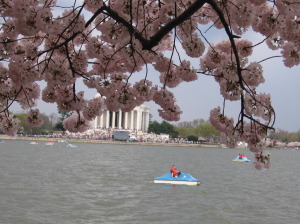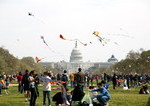Au Pairs generally spend a lot more time with their kids during the summer,so please share the following safety measures with them or anyone in charge of your children:
FUN IN THE SUN
Source: http://www.aap.org/advocacy/archives/tanning.htm
Babies under 6 months:
- The two main recommendations from the AAP to prevent sunburn are to avoid sun exposure, and dress infants in lightweight long pants, long-sleeved shirts, and brimmed hats that shade the neck to prevent sunburn. However when adequate clothing and shade are not available, parents can apply a minimal amount of suncreen with at least 15 SPF (sun protection factor) to small areas, such as the infant’s face and the back of the hands. If an infant gets sunburn, apply cold compresses to the affected area.
For All Other Children:
- The first, and best, line of defense against the sun is covering up. Wear a hat with a three-inch brim or a bill facing forward, sunglasses (look for sunglasses that block 99-100% of ultraviolet rays), and cotton clothing with a tight weave.
- Stay in the shade whenever possible, and limit sun exposure during the peak intensity hours – between 10 a.m. and 4 p.m.
- On both sunny and cloudy days use a sunscreen with an SPF of 15 or greater that protects against UVB and UVA rays.
- Be sure to apply enough sunscreen – about one ounce per sitting for a young adult.
- Reapply sunscreen every two hours, or after swimming or sweating.
- Use extra caution near water and sand (and even snow!) as they reflect UV rays and may result in sunburn more quickly
POOL SAFETY
Source: http://www.aap.org/family/tipppool.htm
- Install a fence at least four-feet high around all four sides of the pool. The fence should not have openings or protrusions that a young child could use to get over, under, or through.
- Make sure pool gates open out from the pool, and self-close and self-latch at a height children can’t reach.
- If the house serves as the fourth side of a fence surrounding a pool, install an alarm on the exit door to the yard and the pool.
- Never leave children alone in or near the pool or spa, even for a moment.
- Keep rescue equipment (a shepherd’s hook – a long pole with a hook on the end – and life preserver) and a portable telephone near the pool. Choose a shepherd’s hook and other rescue equipment made of fiberglass or other materials that do not conduct electricity.
- Avoid inflatable swimming aids such as “floaties.” They are not a substitute for approved life vests and can give children a false sense of security.
- Children age 4 and older should be taught to swim. Parents may choose to start swimming lessons before age 4 if their children are developmentally ready, but swim programs should never be seen as “drown proofing” a child of any age.
- Whenever infants or toddlers are in or around water, an adult should be within arm’s length, providing “touch supervision.”
- Avoid Entrapment: Suction from pool and spa drains can trap an adult underwater. Do not use a pool or spa if there are broken or missing drain covers. Ask your pool operator if your pool or spa’s drains are compliant with the Pool and Spa Safety Act.
- Large inflatable above-ground pools have become increasingly popular for backyard use. Children may fall in if they lean against the soft side of an inflatable pool. Although such pools are often exempt from local pool fencing requirements, it is essential that they be surrounded by an appropriate fence just as a permanent pool would be so that children cannot gain unsupervised access.
PLAYGROUND SAFETY
Source: http://www.aap.org/advocacy/archives/maytra.htm
Source: http://www.aap.org/family/playgrd.htm
The playground should have safety-tested mats or loose-fill materials (shredded rubber, sand, wood chips, or bark) maintained to a depth of at least 9 inches. The protective surface should be installed at least 6 feet (more for swings and slides) in all directions from the equipment.
- Equipment should be carefully maintained. Open “s” hooks or protruding bolt ends can be hazardous.
- Swing seats should be made of soft materials such as rubber, plastic or canvas.
- Make sure children cannot reach any moving parts that might pinch or trap any body part.
- Never attach—or allow children to attach—ropes, jump ropes, leashes, or similar items to play equipment; children can strangle on these.
- Make sure metal slides are cool to prevent children’s legs from getting burned.
- Do not allow children to play barefoot on the playground.
- Supervise children on play equipment to make sure they are safe.
SKATEBOARD, SCOOTER, IN-LINE SKATING AND HEELYS SAFETY
Source: http://www.aap.org/advocacy/archives/marskate.htm
Children should never ride skateboards or scooters in or near traffic.
- All skateboarders and scooter-riders should wear a helmet and other protective gear; wrist guards are particularly important.
- Communities should continue to develop skateboard parks, which are more likely to be monitored for safety than ramps and jumps constructed by children at home.
- While in-line skating or wearing Heelys, be sure to wear appropriate protective equipment and only skate on designated paths or rinks and not on the street.
Never leave anyone — infants, children, or pets — in a parked car.
HAVE A FUN SUMMER!


 Earth Day
Earth Day Cooking with my kids is one of my favorite things to do! Every member of our family enjoys food and trying new recipe is not only fun but a good way to eat a variety of things.
Cooking with my kids is one of my favorite things to do! Every member of our family enjoys food and trying new recipe is not only fun but a good way to eat a variety of things.
 April Fools’ Day or All Fools’ Day is a day celebrated in various countries on April 1. People will play practical jokes on each other,so watch out and don’t be too gullible.
April Fools’ Day or All Fools’ Day is a day celebrated in various countries on April 1. People will play practical jokes on each other,so watch out and don’t be too gullible. The National Cherry Blossom Festival is an annual two-week event that celebrates springtime in Washington, DC as well as the 1912 gift of the cherry blossom trees and the enduring friendship between the people of the United States and Japan.
The National Cherry Blossom Festival is an annual two-week event that celebrates springtime in Washington, DC as well as the 1912 gift of the cherry blossom trees and the enduring friendship between the people of the United States and Japan.